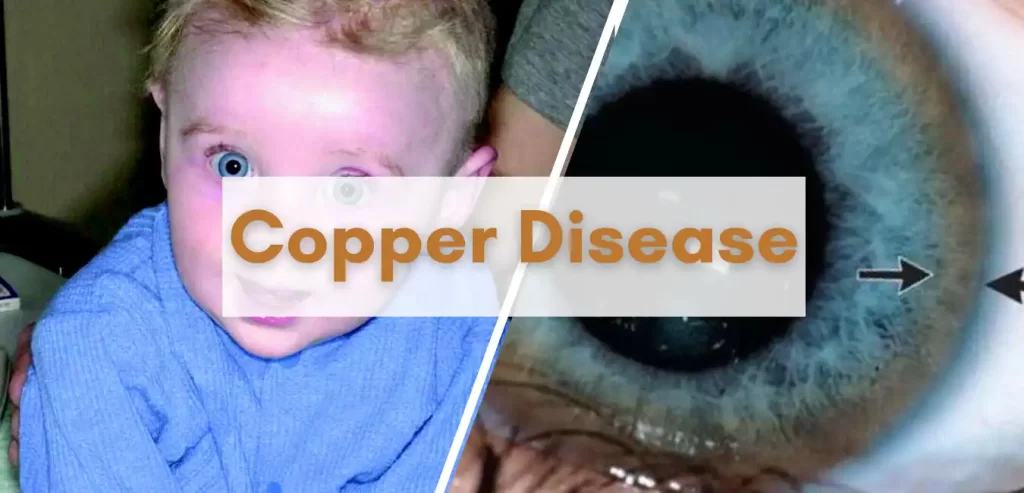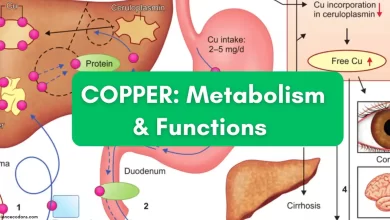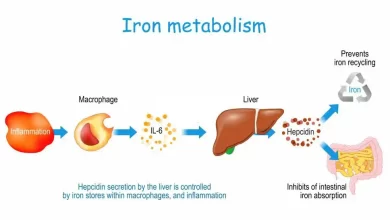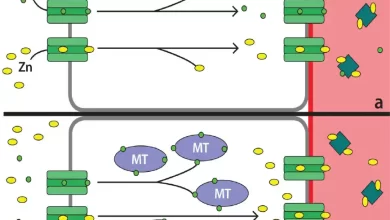Copper is a trace element that is essential for human health. It plays a role in several critical biological processes, including energy production, iron metabolism, connective tissue synthesis, and nervous system function.

Despite its importance, the body needs only a tiny amount of copper to function properly. Copper is found in various foods; most individuals get enough from a balanced diet. However, certain genetic and acquired disorders can disrupt copper metabolism, leading to excess or Deficiency. Here are some of the central conditions related to copper:
1-Wilson’s disease (hepatolenticular degeneration)
Wilson’s disease has two causes. One cause is the inability of copper to bind to ceruloplasmin. When a protein compound can attach to a non-protein combination in biochemistry, the protein part is called “apo.” Ceruloplasmin is also a protein that can bind to copper, and when it does, it is called apoceruloplasmin.
The second cause of Wilson’s disease is the inability to excrete excess copper through bile. Copper deposits in the liver, kidneys, corneas, and brain cause problems for these tissues.
Note: One of the manifestations of Wilson’s disease is a ring that forms around the patient’s eye’s cornea, a yellow or green ring known as the Kaiser-Fleischer ring.
Note: They use a medicine called “penicillamine” to treat Wilson’s disease. Penicillamine acts as a receptor for copper and prevents copper from being deposited in tissues such as the liver, kidney, cornea, and brain.
Note: Wilson’s disease is a disease related to non-sex chromosomes. Therefore, it is called an autosomal recessive disease. It means that a person will only get this disease when both genes received from parents are defective.
2-Menkes disease or steel hair syndrome
This is an X-linked disease characterized by kinky hair as one of its essential clinical manifestations. The cause of this disease is due to a defect in the intestinal absorption of copper.
In this disease, copper is absorbed through intestinal cells, but the problem lies in transferring copper from the intestine to the bloodstream. That is, a portion of intestinal cells close to the bloodstream cannot perform copper transfer. For this reason, if individuals with this disease are injected with copper intravenously, their problem will be resolved, provided that the disease is diagnosed early.
Note: Late diagnosis of this disease can lead to mental retardation, instability of average body temperature, abnormalities in bones, as well as infectious diseases in these patients.
3-Copper Deficiency:
Although rare, copper deficiency can occur in specific situations, such as malnutrition, malabsorption, or excessive zinc intake. Symptoms can include anemia, low white blood cell count, osteoporosis, and neurological symptoms like numbness and weakness due to damage to the peripheral nerves (a condition known as peripheral neuropathy).
4-Idiopathic Copper Toxicosis:
This is a rare condition characterized by an excess of copper in the liver but without the genetic mutations seen in Wilson’s Disease. Symptoms can be similar to those of Wilson’s Disease.
Treatment for copper diseases
Treatment for these conditions often involves managing copper levels in the body. For example, in Wilson’s disease, treatment may include medications that reduce copper absorption or increase its elimination. In the case of Menkes Disease, early treatment with copper injections may help to improve some symptoms. Copper deficiency is typically treated with copper supplements. As always, a healthcare professional should diagnose and treat these conditions.







